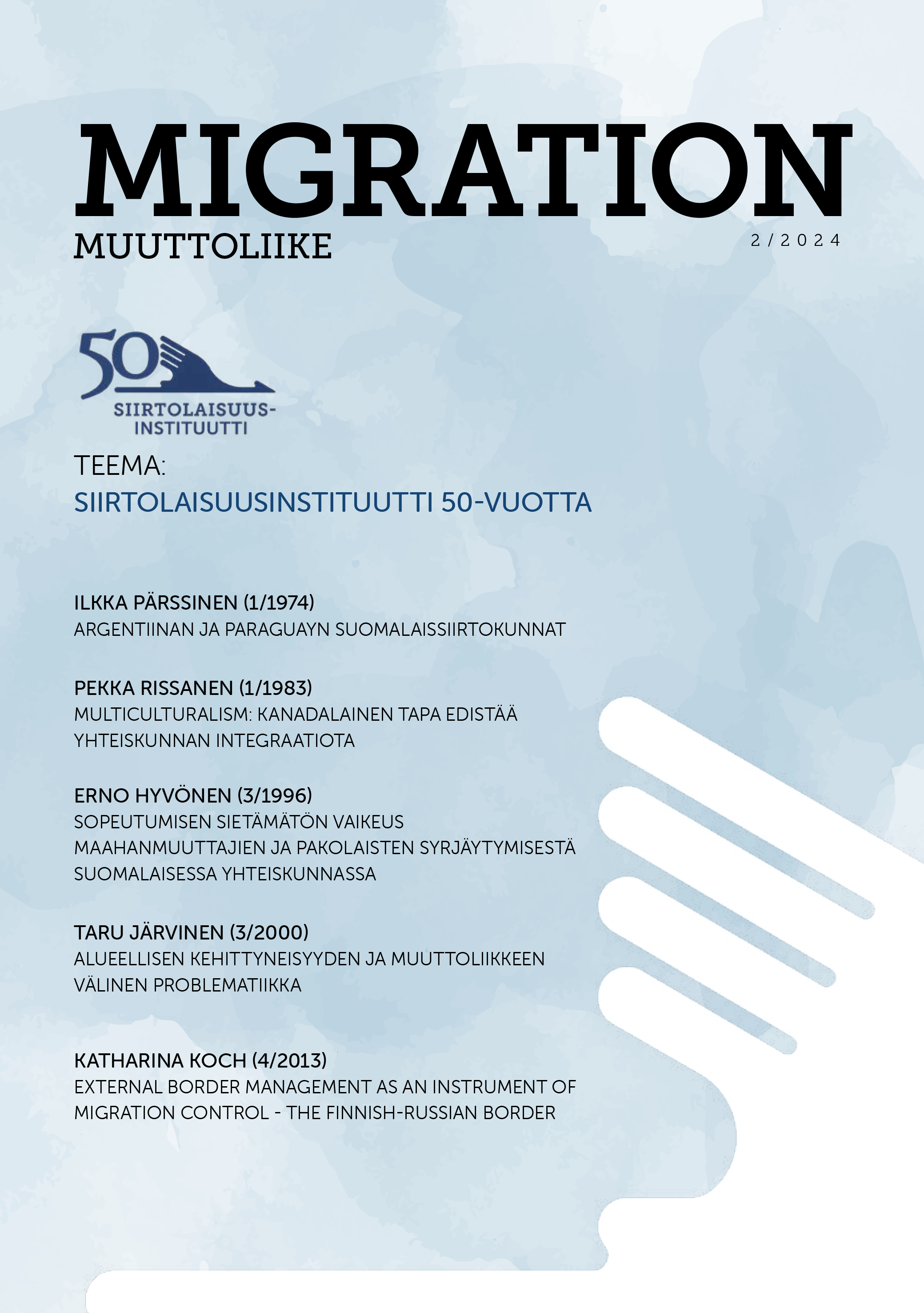EXTERNAL BORDER MANAGEMENT AS AN INSTRUMENT OF MIGRATION CONTROL
THE FINNISH-RUSSIAN BORDER
Abstrakti
This article deals with the Finnish-Russian border in light of the European external border control policy and its impact on immigration. The 1985 Schengen agreement removed internal European border controls and external border protection became a major concern of
the European Union (EU) and heads of states. The European discourse towards immigration changed during the last decade and patterns show tighter external borders. This research follows the Copenhagen school of security and scrutinises the Finnish external border
approach under the aspect of immigration. It analyses the socio-economic importance of the Finnish-Russian border in comparison to the European trend that decreases the penetrability of external borders. The study results show that the Finnish policy approach focuses on regional development in order to achieve economic balance in the border regions. This approach is supposed to increase security by economic rather than by traditional border control strategies.
Tiedostolataukset
Julkaistu
Numero
Osasto
Lisenssi
Copyright (c) 2013 Katharina Koch

Tämä työ on lisensoitu Creative Commons Nimeä 4.0 Kansainvälinen Julkinen -lisenssillä.




